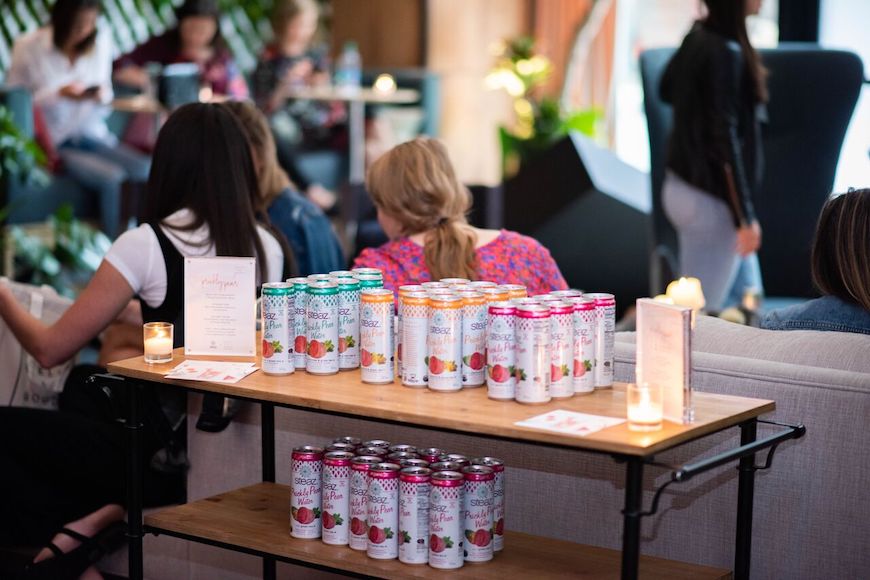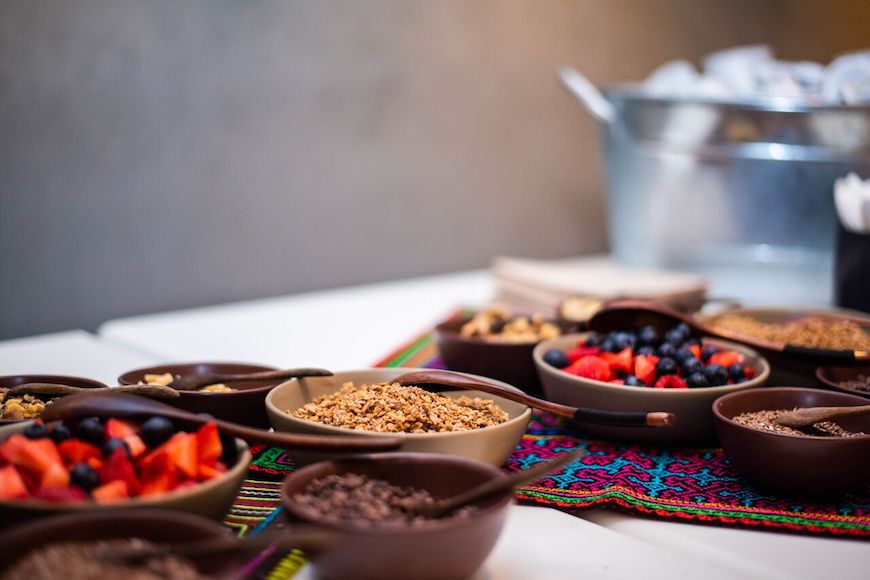Need Some New Healthy Snack Options? These Pro Noshers Have Some Genius Ideas
But then, there's always that eternal question as you look over the office snack stash: Is this actually healthy for me?
At this week's sold out Well+Good TALKS at The Assemblage in New York City, a panel of noshing experts—including Siggi Hilmarsson, founder and CEO, Siggi’s; Keri Glassman, RDN, CDN, and founder and CEO of The Nutritious Life Studio; and Kelly Landrieu of Whole Foods Market answered the sold-out crowd's must-know questions about snacking right and snacking deliciously.
Keep reading for a super quick rundown of the evening's top munching intel.

1. Our fast-paced lifestyle has made America a nation of snackers—and that can be a good thing
Quoting a Mintel report from 2015, Well+Good's Senior Food and Health Editor Emily Laurence, rolled out some seriously interesting stats about modern day snacking: 97 percent of Americans have at least one snack a day, while nearly half of surveyed consumers admitted to eating two to three snacks a day.
Glassman (who BTW, is so snack-savvy that she wrote a whole book on the subject) hypothesizes that America likely owes its noshing craze to two key factors. First, everyone's lives are becoming busier by the moment. And second, "We snack because our culture has programmed us to snack."
"Snacks are the anchor for health." —Keri Glassman, RDN, CDN
But Glassman doesn't think that's a bad thing. In fact, she believes that "snacks are the anchor for health." Why? According to the registered dietician, choosing snacks that nourish you when you're hungry will not only fulfill the nutritional needs your body is asking for, but also keep you from overeating at mealtime. "If you're eating real food, it doesn't matter what time or how you're eating," she says.

{{post.sponsorText}}
One super healthy (and yeah, kinda weird) snack to stock up on: dried fish. An Icelandic favorite, Hilmarsson says he grew up eating it alongside yogurt. Who knew?

2. Your fave Whole Foods snacks earned their sacred spaces on the shelves through creativity, perseverance, and a dash of luck
Landrieu, the panelist whose job basically involves scouting local products for Whole Foods across America (#goals), divulges that the company doesn't have one streamlined process for selecting the brands to stash on their shelves. Instead, she says, "We're always looking for those interesting, innovative products that fill a need and speak to someone's soul."
No kidding! That's exactly how Siggi's got recruited for the Whole Foods dairy aisle. During a retreat Hilmarsson's friend was putting on (where his yogurt was on the menu), he just so happened to run into a Whole Foods employee. And well, the rest is history.
Whether Landrieu and other Whole Foods food "foragers" mine new finds at farmers markets, in serendipitous retreat-settings, or as they're scrolling through the "Discover" tab of Instagram, she says each and every product shares two things in common. There's a need for them in the market, and customers will be stoked to add them to their pantries.

3. When you're shopping for nutritious snacks, consider ingredients first
"All of us have to eat some food out of a package, right?" Glassman asks the audience.
Yep, but according to this health pro, there's definitely a healthy and not-so-healthy way for you to choose the snacks that you have to unwrap.
Rather than scanning the nutrition label for fats, sugars, and calories, Glassman advises skipping straight to the ingredients list. Is it long? Can you pronounce all the words on it? And—as Hilmarsson adds—does it feature 16 different names for sugar, like molasses, sucrose, and honey?
Once the ingredients have met your lofty—yet totally necessary—standards, you're ready to look at the nutrition label. But if the ingredients are simple, featuring ingredients like fruits, veggies, nuts, and healthy fats, the snacking experts say you can go ahead and add it to your cart.
And Glassman recommends that you be on the lookout for three other red flags. See a product that's trying to be something that it's not (like powdered peanut butter)? Skip it. Spot a salad dressing that claims to be low-fat, but has a high serving of sugar? Keep on walking.
And if you're on the market for gluten-free products, do your homework to make sure what you're buying isn't laden with chemicals and preservatives that are actually worse for you than the actual gluten.
Special thanks to our partners Aethern Beauty, Elemis, Well Told Health, Purely Elizabeth, Justin's, No Cow, Siggi's Dairy, Steaz, Simply Gum, and Whole Foods Market, who provided amazing (and delish) treats for the goody bags.
Need even more snack inspo? These are the energizing ones that wellness execs always keep in their offices, and protein-packed options that will keep you full on the keto diet.
Loading More Posts...